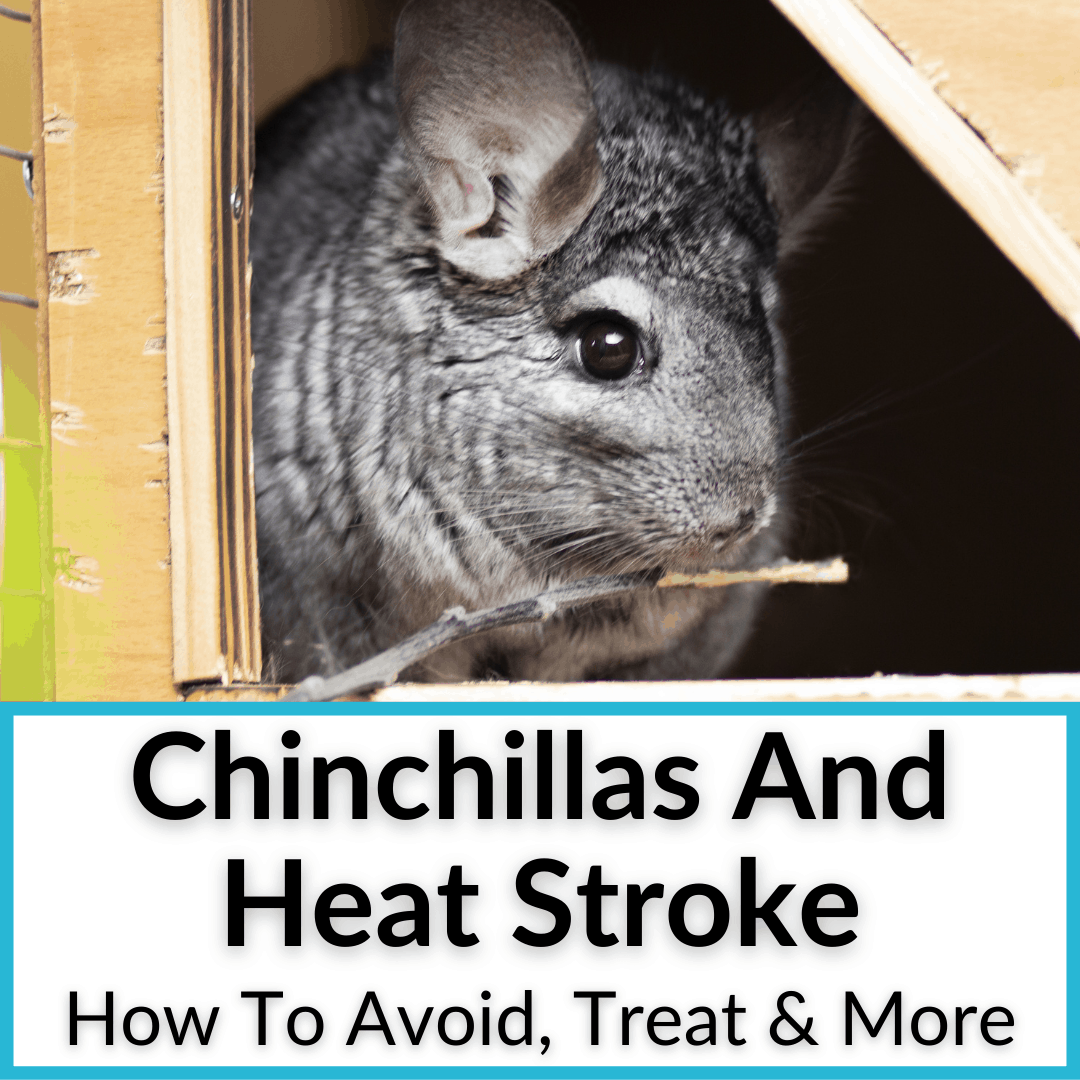
I just love touching it.
Did you know the chinchilla actually has some of the densest fur on the planet?
That’s what makes it so soft. But it also means that these rodents are prone to overheating.
And overheating can lead to heat stroke, which usually means death.
In short: heat stroke is a serious concern in chinchillas. But it’s nothing to fear, if you know how to prevent it.
Keep reading lo learn all about chinchillas and heat stroke, from prevention, to treatment, and much more.
Contents
Chinchilla Heat Stroke
Chinchillas struggle with high temperatures and high humidity.
It is one of the downfalls of their luscious fur. And it means you need to avoid your chin being exposed to heat and/or humidity.
Chinchillas are naturally accustomed to the climate in the Andean Mountains. Temperatures there tend to be mild with low humidity. There is not much precipitation either.
The primary reason chinchillas struggle with heat is due to their dense fur, but also their inability to sweat.
When a chinchilla gets too hot, it can die in a hurry.
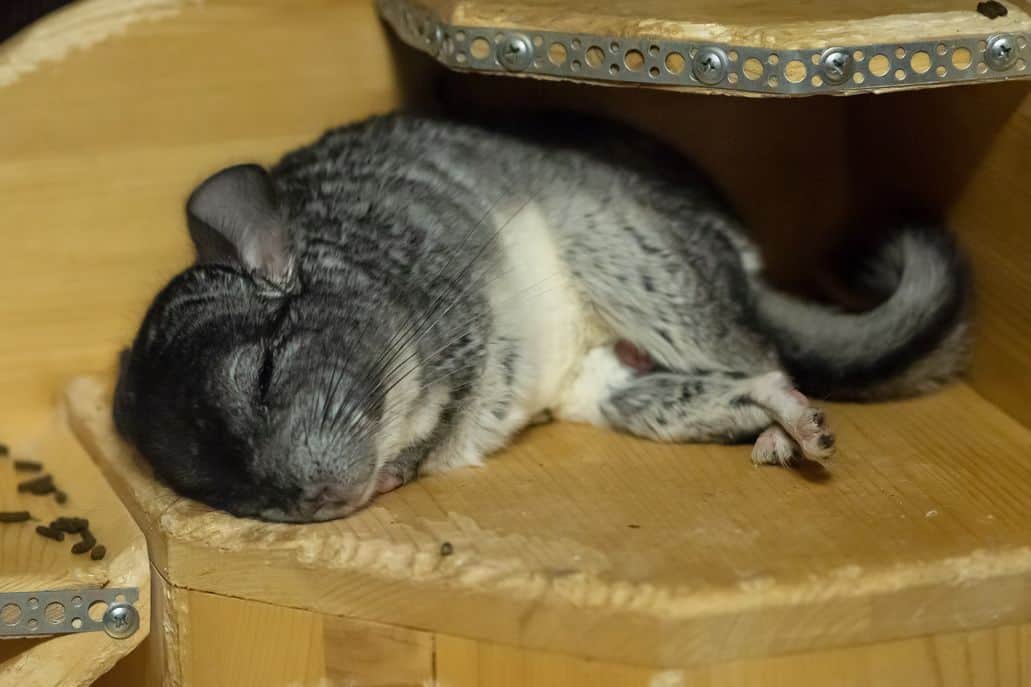
It is absolutely imperative to ensure the environment you provide for your chinchilla remains at the proper temperature and low humidity, so that it can live a healthy and comfortable life.
If you don’t, your chinchilla could suffer from heat exhaustion or heat stroke, without you even realizing what is going on. Before you know it, your precious pet is dead.
While heat exhaustion is not quite as severe as a heat stroke, both conditions still need immediate care. You need to help your chinchilla cool down to avoid other illnesses and death.
Before diving into the topic in more detail, I want to make sure I get my disclaimer out of the way.
The information provided in this post is coming from a chinchilla owner who has raised their chinchilla for the past 5 years and built the Planet Chinchilla community to share that information with all of you.
But it is not coming from a vet. If your pet needs care, or you otherwise believe you need a vet, please contact one in your area as soon as possible.
Now that we have that out of the way let’s begin by covering how you prevent heat stroke and heat exhaustion with chinchillas. Then we’ll move on to recognizing heatstroke and providing treatment when it does occur.
Preventing Heat Stroke In Chinchillas
Preventing heatstroke and heat exhaustion with chinchillas is easier than you think, and I do not want anyone reading to think that this will present some significant challenge.
However, it is essential to understand that preventing heatstroke begins on the day you adopt your chinchilla from your local PetSmart, Petco, or from a local breeder or rescue.

Here is why.
Chinchillas are known to get stressed out quite a bit when traveling, which is naturally going to raise their body temperature the same it would do to you.
This makes it essential, depending on the temperatures in your area, that you have a vehicle where the AC unit is working correctly and is turned on. You should also have a well-ventilated travel carrier for your chinchilla to get it home safely.
Chinchillas are simply not a fan of traveling, and if the temperatures are not right for the occasion, this could easily lead to heat exhaustion and heat stroke before you ever even get your chinchilla home.
Now, let’s assume you follow this advice, and it’s time to take your chinchilla into your forever home.
Before adopting your chinchilla, you should ensure you have a room planned out where you intend to keep your chinchilla cage.
I also recommend spending the money and purchasing one of the better chinchilla cages with proper ventilation and the other benefits your chinchilla needs to remain healthy.
Now, the room where your chinchilla is going to live is also especially important when it comes to heatstroke.
If you live in an area where temperatures can climb above 75° F, you must have proper ventilation and an adequately cooled room for your chinchilla. The room must also have relatively low humidity.
This article covers the exact temperatures a chinchilla needs.
Keep in mind that you also want a room where natural light can enter, to allow your chinchilla to maintain its natural sleep cycles.
If you can get your chinchilla home providing the ideal temperatures in the vehicle and travel case, and have a room planned out where your chinchilla can remain cool and safe, you are in good shape to start the journey of chinchilla parenting.
Now, it is time to ensure you provide everything else needed to avoid heat exhaustion and heat stroke with your chinchilla.
Keep The Water Bottle Filled
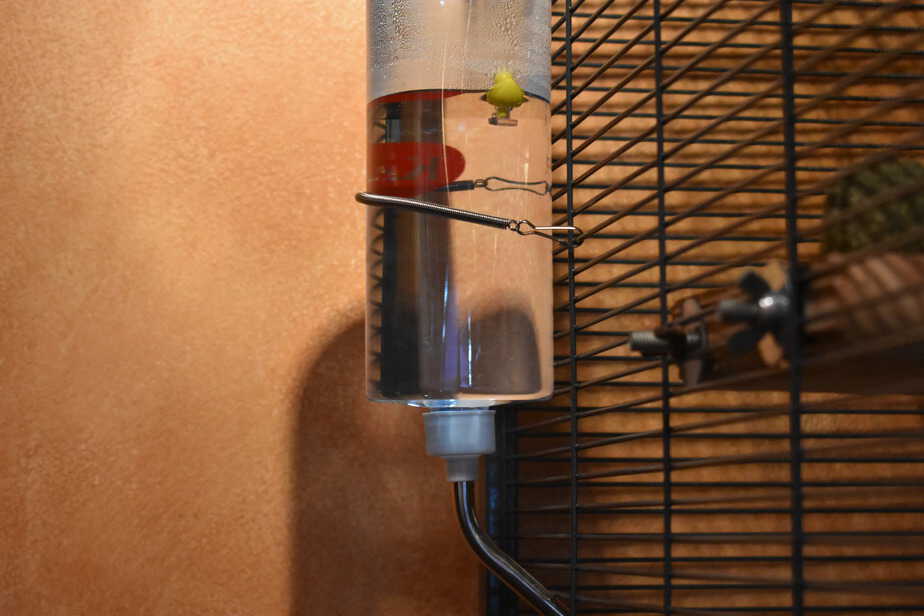
Once your chinchilla is home in a room, and at ideal temperatures, you have the job of putting together your new chinchilla cage.
This is where things begin to get fun. You get to add all the best chinchilla toys to the cage.
You also get to purchase all the best chinchilla accessories for your pet’s new habitat.
And one of those accessories is going to be a water bottle. At least one. I recommend purchasing two of them.
First off, every now and then, you will run into a broken water bottle or a clogged spout that makes the water bottle no longer function.
Secondly, I prefer to keep a full water bottle attached to each level of her cage, which is the Critter Nation 2 Dual Level Cage.
While this is not 100% necessary, it makes me feel better, knowing that she always has two full and large water bottles filled with purified water from a gallon jug, even if something happens to one of them.
Because you need to always keep your chinchilla’s water bottle full, so that it has unlimited access.
This is how your chinchilla stays hydrated, and if they do happen to get hot, it is going to ensure your chinchilla can get a drink of water to avoid heat exhaustion and heatstroke.
Next, we need to worry about the humidity in the room where we keep our chinchillas, and also where we interact with our chinchillas, if in a different location.
Keep Humidity Levels Low
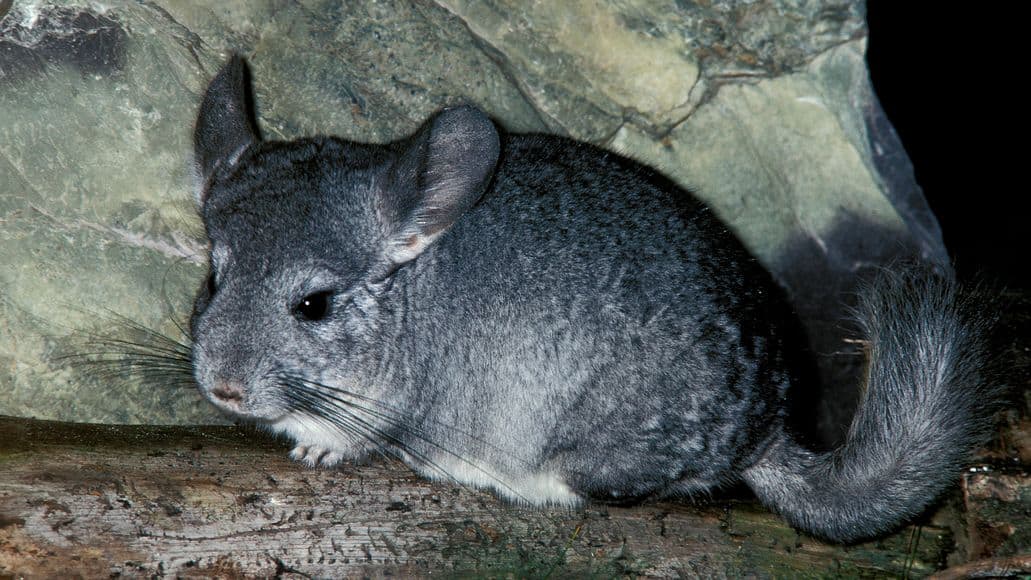
Humidity is another concern with chinchillas when it comes to heatstroke and heat exhaustion. The good news is that this is not an issue in most homes.
But it does depend on where you live. And if you keep your chinchilla on the main level of your home, or somewhere like a basement, that might be more prone to humidity.
If that is the case, I highly recommend purchasing a de-humidifier for your chinchilla. This is the one that I use.
It helps to keep the humidity below 50% in the room where you keep your chinchilla. I keep it under 50% and have not not had any issues. It helps me sleep at night knowing that the room is at the proper temps and the humidity levels remain low.
High humidity can lead to heatstroke and heat exhaustion in the same fashion that high temperatures can.
Always be sure to plan for both temperatures and humidity when you go to adopt your new family chinchilla.
Do Not Over-Stimulate Your Chinchillas During Playtime
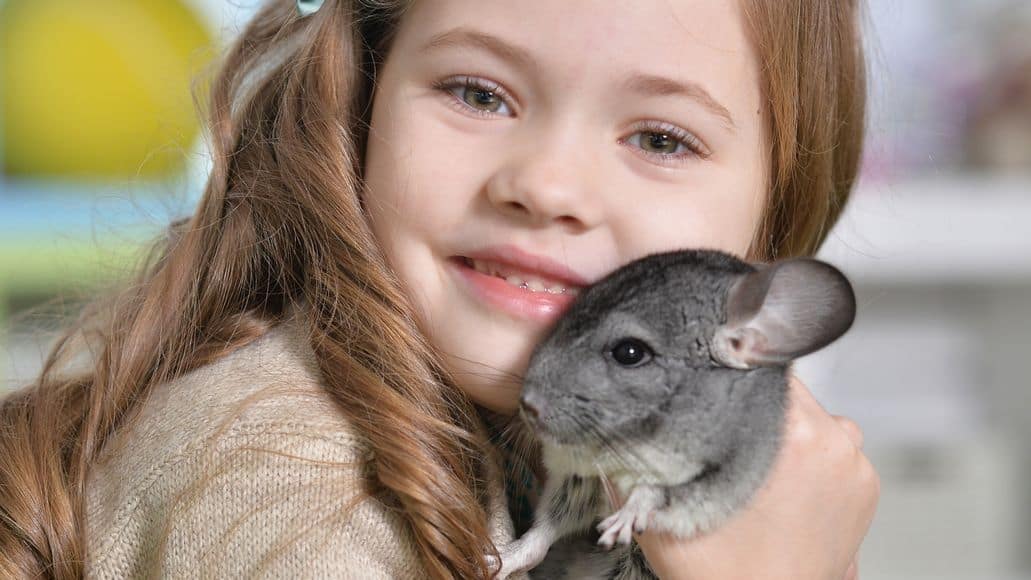
So far, we have the temperature, humidity, cage set-up, and travel considerations taken care of when it comes to helping your chinchilla avoid heatstroke.
Now we need to discuss the considerations you need to keep in mind when you have your chinchilla out for playtime outside of the cage.
First and foremost, I do not recommend getting your chinchilla out of the cage often, in the first few weeks.
This is when your chinchilla is still attempting to adapt to its environment. It can get stressed quickly during this period.
Stress can cause overheating, so ensure your chinchilla feels comfortable with you before getting too crazy during playtime.
You should never chase your chinchilla or put it in a situation where it feels scared. This can lead to increased body temperatures, but also potentially damage the bond with your pet. It can begin to lose trust in you.
I highly recommend you read this article about how to get your chinchilla to enjoy being held. You can also read my post about how to get your chinchilla in and out of the cage.
Those two posts will help you build a better bond with your chinchilla, ultimately keeping it calmer during playtime.
If your chinchilla can effectively get some activity out of the cage without feeling scared or threatened, you have a much better chance of never dealing with heat stroke or heat exhaustion.
Chinchilla Heat Stroke Symptoms

Sometimes we do everything right, and bad things happen anyway.
Heatstroke and heat exhaustion with chinchillas may occur no matter how perfect your parenting skills are and how spot on you keep the temperatures and humidity levels.
With that being the case, it is essential to understand how to effectively recognize heat stroke and heat exhaustion in your chinchilla, so you can effectively render care and get your chinchilla to a vet.
Below, I am going to break down some of the common warning signs you can look for that indicate heat stroke or heat exhaustion.
Red Ears
Depending on the color or mutation of your chinchilla, the inside and outside of the ears may be an off-white transparent type color.
One of the signs of heatstroke and heat exhaustion with a chinchilla is their ears turning red.
Depending on how visible your chinchilla’s inner ear is, you may also notice that the blood vessels are dilated in some fashion.
If you notice the ears turning red during playtime, it is a good idea to end playtime and allow your chinchilla to go back to its cage to begin cooling down.
If you notice this while it is just resting, or inside the cage, you may want to double-check the temperature of the room, check the water level in the water bottle, or consider investing in additional tools to help your chinchilla cool down.
One of those items you can purchase are known as Chinchilla Chiller Pads. These are essentially a small granite platform your chinchilla can sit on to cool down.
- Made of granite stone to keep chinchillas cool and healthy
- Can be placed anywhere inside chinchilla's home
- 6-Inch long, 10-inch wide
Rapid Breathing
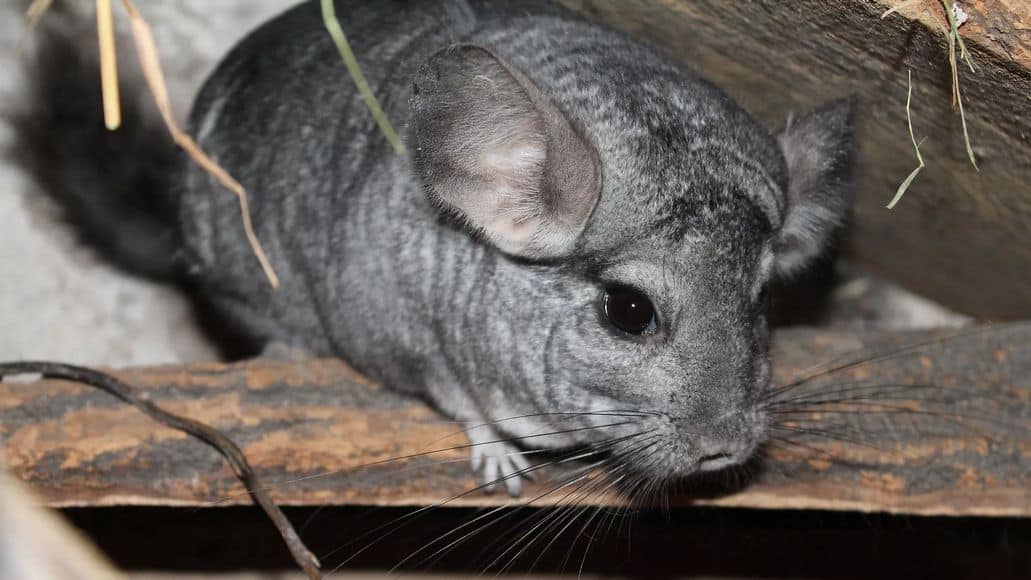
Rapid or labored breathing is another sign that your chinchilla may be overheating or experiencing heat stroke or heat exhaustion.
If this is taking place, you need to get your chinchilla to cool down and double-check the steps I referenced just a moment ago.
Drooling
Drooling can be another indicator of overheating with a chinchilla. Drooling can also indicate other issues such as overgrown teeth or other dental problems.
While it is wise to implement the cooldown steps, we have discussed if you notice drooling, it is also a good idea to allow a vet to have a look, to ensure your pet is not suffering from some other illness.
Better safe than sorry in these situations.
Lethargy
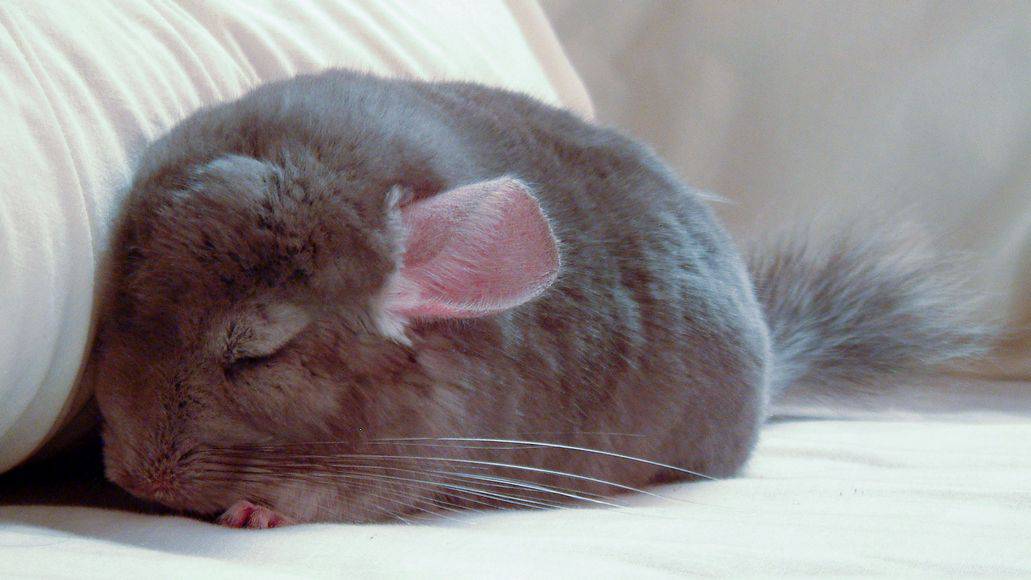
Lethargic behavior is another symptom of heat exhaustion and heat stroke, but it does not always indicate that this is the issue.
If it is apparent your pet is acting lethargic due to the heat, you can take the action steps we have discussed to cool it down.
However, if it is not plain as day that this is the cause, lethargic behavior could also indicate another severe illness, and you should consult with a vet immediately.
Laying On Its Side
Again, we have another sign of heat exhaustion and heat stroke that could also be an indicator of other illnesses in chinchillas.
A chinchilla laying on its side could indicate an overheating issue, but it is just as likely to indicate other common illnesses.
With this behavior, I 100% recommend consulting a vet to diagnose the issue correctly and advise you on how to render the proper care.
Seizure
Heatstroke could also lead to seizures. As in humans, they result in your pet’s body spasming. You may also notice its nose twitching. Read “Why Is My Chinchilla’s Nose Twitching?” for more on this.
Treating Heat Stroke In Chinchillas

Now that we understand what we are looking for and how to spot heatstroke and heat exhaustion, it is also important that we know how to render the initial care and get our chinchillas feeling better.
You have a few things you can do when you believe you are witnessing heat stroke. Acting quickly is the most important thing you can do.
The first thing you need to do is get your chinchilla to a cooler environment immediately. Try moving it to the coldest room of the home, or close to an air vent blowing cool air into the room.
You can also put a fan in the room to help circulate the cold air. Try and get to a room where the temperature is at 70° F or lower.
Another easy option to get your chinchilla near cooler temperatures is to head towards the refrigerator. Open the freezer doors and fridge doors, to allow the cold air to hit your chinchilla.
Keep your chinchilla elevated away from you instead of in a snuggling position, to reduce heat transfer from you body and allow it to cool down faster.
Under no circumstances should you ever leave your chinchilla unattended near the fridge or in the refrigerator.
Hold your chinchilla and stay with it, until you begin feeling comfortable that it is cooling down adequately.
You can also wrap your chinchilla in ice packs for a short amount of time. Ensure some insulation (like a towel) is provided between the ice and your chinchilla, to avoid shock or it getting too cold.
Do not place your chinchilla in ice water or put your its head underwater.
Regardless of the care you provide during this stage of the process, it is still essential to consult with a vet, to ensure no other illnesses are present, and that your chinchilla will be okay following the heat exhaustion.
Let’s cover those details next.
Calling A Vet When Necessary
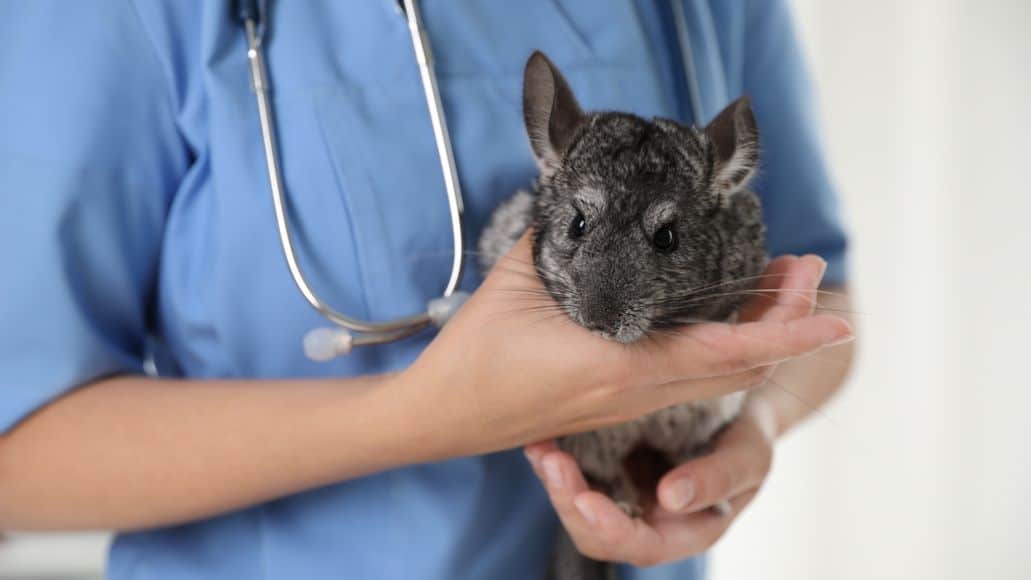
To be honest, anytime heat exhaustion or heat stroke occurs with a chinchilla, you should contact a vet. Whether or not they advise you to show up with your chinchilla physically at the office is an entirely different story.
It is not often that a chinchilla needs to see the vet, since the trip can be quite stressful for them. A lot of the time, if your vet feels you have adequately cooled your chinchilla down, they may advise not coming in to avoid further stress and to avoid the chance of overheating further during the travel period to the vet.
Nonetheless, a vet is trained to provide care and can help by providing a check-up following the heat exhaustion to ensure your chinchilla is going to be okay.
This may include taking your chinchilla’s blood pressure, taking a heart rate reading, and checking to ensure no further damage was done due to the heat.
I would always recommend calling the vet at a minimum, if you believe your chinchilla suffered from heatstroke and take the advice they give from that point on.
Chinchilla Overheating: Frequently Asked Questions
Now that we have you up to speed on recognizing, preventing and providing care for heatstroke and heat exhaustion with your chinchilla, let’s begin answering a few other frequently asked questions on the topic.
Can Chinchillas Die From Heat?
Chinchillas can die from heat. They overheat due to dense fur and an inability to sweat. When heat stroke and heat exhaustion occur with chinchillas, it can become deadly quickly.
What Temperature Is Too Hot For Chinchillas?
Over 75 F is too hot for chinchillas. They need to remain at temperatures below 75 degrees F, to prevent heatstroke and heat exhaustion. This temperature may need to be reduced further, based on the humidity levels.
Can Chinchillas Live In Hot Weather?
Chinchillas cannot live in hot weather. If you live in a hot weather climate and wish to adopt a chinchilla, you need to keep it at ideal temperatures in a climate-controlled home, with relatively low humidity levels.
Not doing so can quickly cause a chinchilla to die.
My Advice And My Chinchilla’s Living Situation
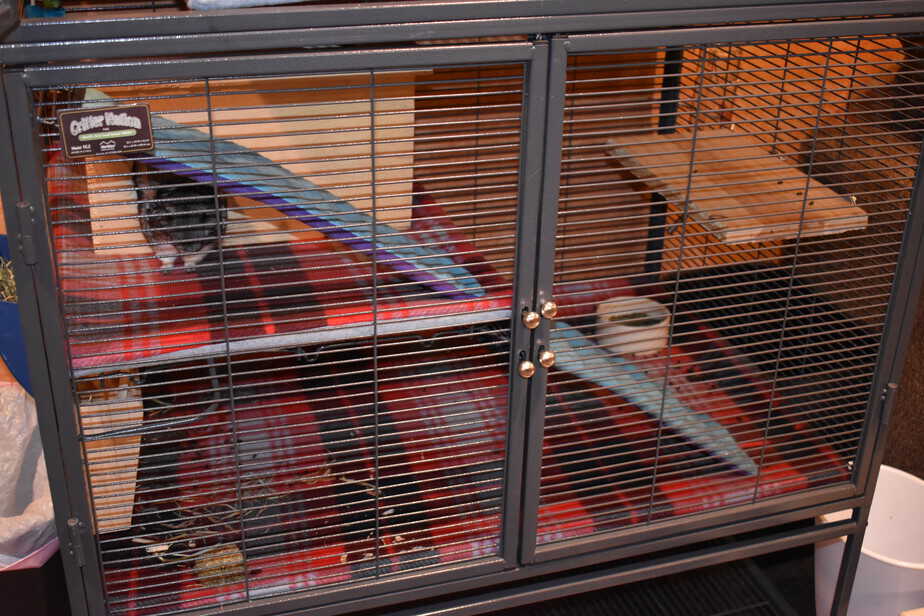
The last thing I want to provide you on the topic of heat exhaustion and heat stroke is a quick overview of my set-up with my own chinchilla.
I thought this may help you to understand how I avoid my chinchilla ever dealing with heatstroke and heat exhaustion.
My chinchilla is in my basement in her large Critter Nation Cage. My basement is where my home office is and where I work every day, so we are always right next to each other.
My basement remains at about 68 degrees, which is plenty cool enough for her to feel great all the time.
I also run 2 dehumidifiers at all times to keep humidity low. The humidifiers I use is the one I referenced previously in this post.
I also always attach two large Lixit Water Bottles to her cage and keep them full.
During playtime, I do not overstimulate her, and it typically is only for about 30 to 60 minutes at a time.
I have not had any struggles keeping my chinchilla safeguarded from heatstroke and heat exhaustion, and I believe 100% that if you follow what has been laid out for you today in this post, you won’t have any issues either.
Chinchillas Overheating: Final Thoughts
At the end of the day, heatstroke and heat exhaustion are real problems that may occur with chinchillas, and you must be on the lookout for them.
The good news is that heat-related deaths and illnesses are easy to avoid, if you follow the steps provided in this post.
Chinchillas make for good pets and deserve the best care and plenty of love.
Chili and I wish you the best of luck and hope you never deal with heat stroke or heat exhaustion with your own chinchillas.
Share your thoughts.
Do you have further tips you can recommend for ensuring our chinchillas never experience heat stroke or heat exhaustion?
Do you have any further care tips you can provide in the even that heatstroke or heat exhaustion does occur?
Be sure to share those thoughts, stories, and concerns by dropping a comment below.


Leave a Reply